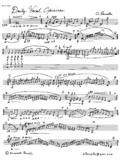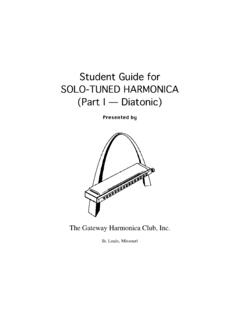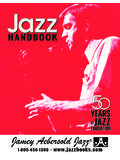Transcription of Keyboard Basics - Smooth Chords
1 Keyboard Basics By Starling Jones, Jr. In starting on the piano I recommend starting on weighted keys. I say this as your fingers will be adjusted to the stiffness of the keys. When you then progress to a light weighted Keyboard , you will fly across the keys. It is still up to you which one you get as it needs to be something you will feel comfortable practicing on. Some keyboards are weighted as well. Keyboards can be 88 keys, 76, or 61. This is something you can decide on based on your needs and space available for the instrument. A lot of musicians have the 61 and/or a 76. key Keyboard . It is easy to fit in the car as they travel from place to place. 88 keys is fine if you have the room, but most 88 key keyboards are rather heavy. I myself like a 76. Keyboard as it give me the flexibility to play without the heaviness to carry.
2 Keyboard Familiarization: ------------------------- The piano / Keyboard uses the following alphabet letters: A B C D E F G. The piano / Keyboard consists of white and black notes. White Notes = Natural or Regular notes Black Notes = Sharps and Flats depending on how you address the note. Moving one note a half step to the right = Sharp (#). Moving one note a half step to the left = Flat (b). Notice the pattern in relationship between the black and white notes. Notice that there are 2 black notes together and then 3 black notes together with white notes in between. This pattern repeats over the entire instrument. You can move between notes via half step (E & F. Notice that there is nothing between those 2 notes.). You can move between notes via a whole step (C & D. Notice C#/Db is between those two notes.)
3 Scales Major Scale - Whole - Whole - Half - Whole - Whole - Whole - Half Minor Scale - Whole - Half - Whole - Whole - Half - Whole - Whole Example - Starting on C ---------------- C D E F G A B C. Number Analysis --------------------------- 1 2 3 4 5 6 7 8. Assigning numbers helps when learning progressions. (2-5-1 which is D major chord, G major chord, C major chord in the key of C). In a Major Scale the Chords are as follows: 1 = Major Chord 2 = Minor Chord 3 = Minor Chord 4 = Major Chord 5 = Major Chord 6 = Minor Chord 7 = Diminished Chord 8 = Major Chord In a Minor Scale the Chords are as follows: 1 = Minor Chord 2 = Diminished Chord 3 = Major Chord 4 = Minor Chord 5 = Minor Chord 6 = Major Chord 7 = Major Chord 8 = Minor Chord No matter what note you start on, if you played the patterns above, you have played a major or minor scale.
4 Learning the notes on the piano . It is vital that we learn all the notes of the piano . Unlike the regular alphabet, the piano only uses the first 7 letters. That is, A B C D E F G. But instead of starting with A, we start with C.. That is: C D E F G A B C. Notice that when we get to G, we started back at A.. This pattern is repeated throughout the entire piano over and over again. CDEFGAB |CDEFGAB |CDEFGAB. Here are a few tips: JUST REMEMBER that C is directly to the left of the two black keys and F is directly to the left of the three black keys. Half Steps & Whole Steps . A HALF STEP IS FROM KEY TO KEY. WITH NO KEYS IN BETWEEN. A WHOLE STEP ALWAYS SKIPS A KEY. WITH ONE KEY IN BETWEEN. HALF STEPS & WHOLE STEPS. As you can see from the picture above, whole steps skip a key while half step intervals are directly from key to key.
5 For example, in the picture, C and D are one whole step apart (as noted by the W ) because there is a key in between them. F and G are also one whole step apart because there is a black key in between them. However, [A] and the black key directly above it are a half step apart because there is NO key in between. The same rule applies to E and the black key directly behind it. REMEMBER . Whole Step (W) = One key in between Half Step (H) = No keys in between What are those black keys? . We studied the white keys of the piano . We learned that the piano consists mainly of 7 alphabetical letters that repeat themselves over and over . CDEFGAB |CDEFGAB |CDEFGAB. So now the question is: What are those black keys? . Those black keys are what we call SHARPS AND. FLATS. Sharps are recognized by this symbol: #.
6 Flats are recognized by this symbol: b Each black key has two names. They can either be called x sharp or x flat. (x being the name of the white key). SHARP = FRONT. FLAT = BACK. If you remember that [sharp = front] and [flat = back], you'll do just fine! A Sharp is the black key a half step in front of a white key (or directly to the right). A Flat is the black key a half step in back of a white key (or directly to the left). Remember: A half step is from key to key with no keys in between. A whole step always skips a key with one key in between. For example, the black key to the top-right of C is C#. Since there is no black key in back of C, there is no black key labeled C flat Another example; the black key directly behind G is G flat (Gb). The black key right on top of A would be ?
7 You guessed it! A#. Introduction to Major Scales . Why is it important to study Scales? It is important to study scales because they make up Chords . Thus, you need to know scales in order to form Chords . For example, to form a major or minor chord, you take the first (1), third (3), and (5) degrees of a scale and play them simultaneously (together at once). Now if you don't know what's the first, third, and fifth notes of a major scale are, how can you form a major chord? YOU MUST KNOW your SCALES! In this study, we will use another method to study scales. Since you've learned half step and whole step relationships, this should be a breeze! MAJOR SCALE: A good way to define a scale is to list the following characteristics: -A scale is an organized series of pitches (8 notes). -A scale consists of a series of notes that differ in sound (you'll never play the same note twice).
8 -A scale is linked to the concept of keys in that a song which utilizes a given scale is said to be in that key (for example Mary had a little lamb in C major). REMEMBER . Whole steps: Always skip a key Half steps: From key to key To form a major scale, you must follow the steps below: W W H W W W H. W = whole step * H = half step (You don't want to forget the property above. Write it down memorize it! It is very important in learning to play all 12 major scales). The C major scale is the easiest! It's simply all the white keys from C to C. C Major Let's examined our secret property as related to the C. major scale W W H W W W H. Starting at C, from C to D is a whole step (W). From D to E is a whole step (W). From E to F is a half step (H). From F to G is a whole step (W). From G to A is a whole step (W).
9 From A to B is a whole step (W). And from B to C is a half step (H). *This same principle will be used to learn all 12 of the major keys in further lessons D Major Scale . To form a major scale, you must follow the steps below: W W H W W W H. W = whole step * H = half step To play a D major scale, simply start at D. 1) Add a whole step (W) = D + E. 2) Add another whole step (W) = D + E + F#. 3) Add a half step (H) = D + E + F# + G. 4) Add a whole step (W) = D + E + F# + G + A. 5) Add another whole step (W) = D + E + F# + G +. A+B. 6) Add another whole step (W) = D + E + F# + G +. A + B + C#. 7) Finish the scale by adding a half step (H) = D + E. + F# + G + A + B + C# + D. D Major E Major Scale . To form a major scale, you must follow the steps below: W W H W W W H. W = whole step * H = half step To play an E major scale, simply start at E.
10 1) Add a whole step (W) = E + F#. 2) Add another whole step (W) = E + F# + G#. 3) Add a half step (H) = E + F# + G# + A. 4) Add a whole step (W) = E + F# + G# + A + B. 5) Add another whole step (W) = E + F# + G# + A +. B + C#. 6) Add another whole step (W) = E + F# + G# + A +. B + C# + D#. 7) Finish the scale by adding a half step (H) = E + F#. + G# + A + B + C# + D# + E. E Major F Major Scale . To form a major scale, you must follow the steps below: W W H W W W H. W = whole step * H = half step To play an F major scale, simply start at F. 1) Add a whole step (W) = F + G. 2) Add another whole step (W) = F + G + A. 3) Add a half step (H) = F + G + A + Bb 4) Add a whole step (W) = F + G + A + Bb + C. 5) Add another whole step (W) = F + G + A + Bb +. C+D. 6) Add another whole step (W) = F + G + A + Bb +.









